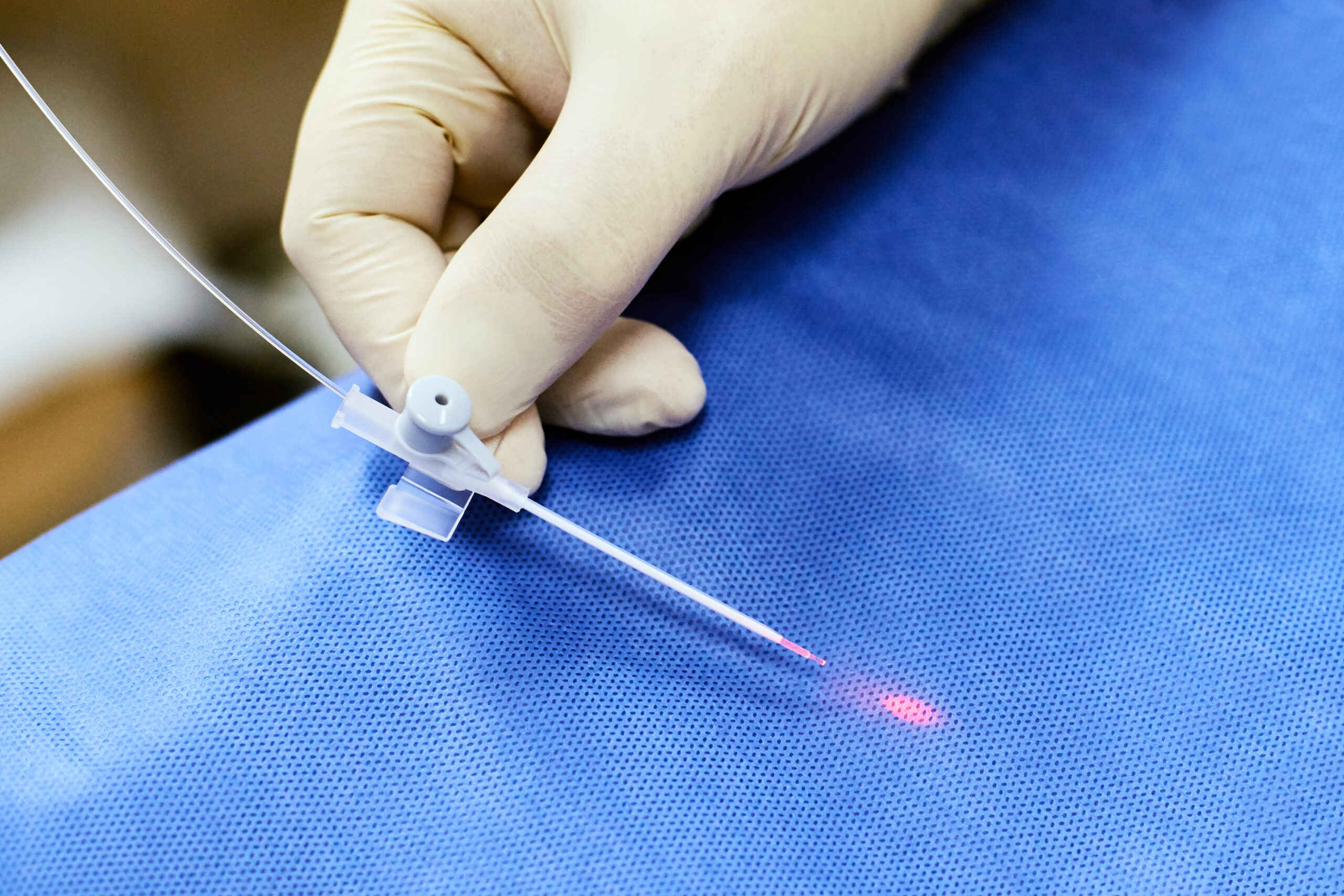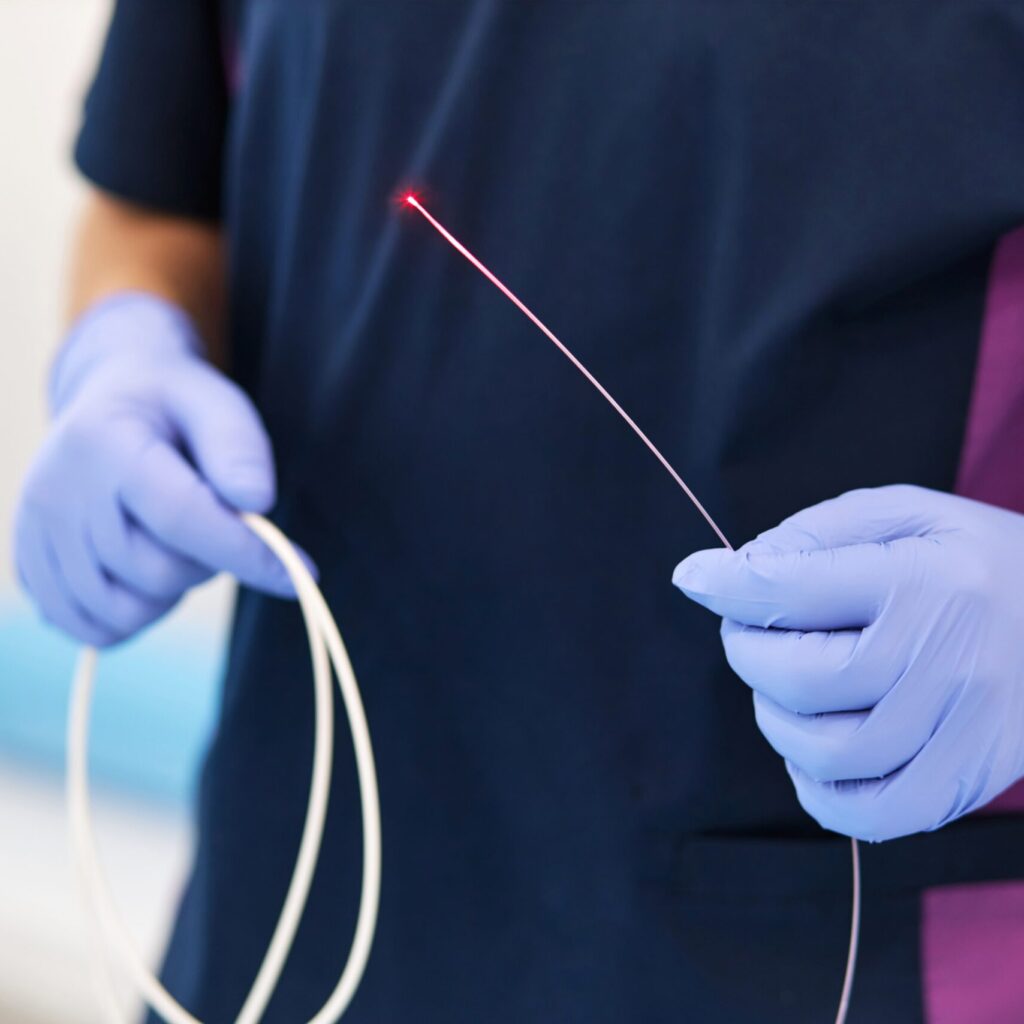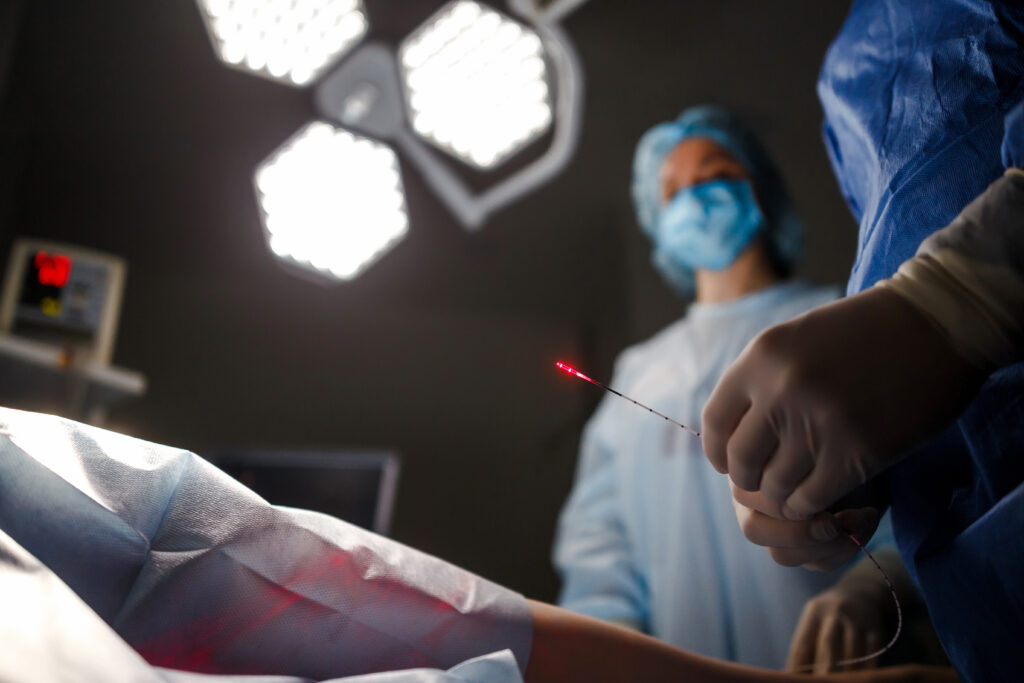
Endovenous Laser Ablation (EVLA)
EVA is an advanced therapeutic agent designed to precisely to deliver treatments directly to where it is needed the most. This targeted approach not only enhances treatment efficiency but also minimises effects promoting a more focused and effective healing process.
What is Truncal Insufficiency?
Truncal insufficiency is a condition in which the main veins, often in the legs, fail to efficiently circulate blood back to the heart due to weakened vein walls or faulty valves. This insufficiency can lead to blood pooling, resulting in symptoms such as swelling, pain, and the formation of varicose veins. As a core cause of venous disorders, truncal insufficiency directly affects circulation and can significantly impact comfort and mobility. Treatments aim to restore proper blood flow by addressing the malfunctioning veins, often through minimally invasive options like ultrasound-guided sclerotherapy or endovenous laser ablation, which help alleviate symptoms and improve overall vascular health.
What is EVLA?
Endovenous laser ablation (EVLA) is a modern treatment used to help people with varicose veins—a condition where veins, often in the legs, become swollen, twisted, and can cause discomfort. In simple terms, EVLA uses laser energy to close off these problematic veins so that blood can flow more easily through healthier veins nearby.
Endovenous laser ablation (EVLA) is a minimally invasive procedure using targeted laser energy to close off problematic veins. By inserting a thin laser fibre directly into the vein, EVLA precisely targets and heats the vein wall, causing it to collapse and eventually be absorbed by the body.
This advanced approach offers an effective solution to symptoms like pain, swelling, and discomfort associated with varicose veins while also improving the appearance of the treated area.
\With a focus on efficiency and precision, EVLA allows patients to experience effective vein treatment with minimal downtime, enabling a quicker return to normal activities.

advantages of endovenous laser ablation
Endovenous laser ablation (EVLA) offers numerous advantages for treating varicose veins, making it a preferred choice for patients seeking effective, minimally invasive options.
One of the primary benefits of EVLT is its precision; the laser fiber can directly target the problematic vein, closing it off and rerouting blood flow through healthier veins. This targeted approach not only effectively reduces symptoms like pain, swelling, and heaviness in the legs but also improves the appearance of the treated area.
EVLA is typically performed as an outpatient procedure under local anaesthesia, which minimises recovery time and allows most patients to return to their normal activities within a day or two.
Additionally, because the procedure is minimally invasive, there’s a lower risk of complications compared to traditional surgery, and many patients experience significant, long-lasting relief with just one treatment.

Precision Healing
Endovenous laser ablation (EVLA) is a targeted, precise treatment for varicose veins that directly addresses the root causes of vein issues without affecting surrounding tissue.
- Targets problematic veins, addressing blood pooling, weak vein walls, and faulty valves
- Uses laser energy to close dysfunctional veins, improving circulation
- Relieves symptoms like pain, swelling, and leg heaviness
- Effective for both large and small veins, providing smoother, healthier-looking legs
Crafting Your Treatment Plan
Creating a personalised treatment plan for endovenous laser ablation (EVLA) begins with an in-depth consultation, where your doctor will evaluate the extent and nature of your varicose veins. During this initial assessment, ultrasound imaging may be used to map out the affected veins and identify areas where blood is pooling or valves are failing. This mapping process enables your practitioner to pinpoint the specific veins that need treatment, allowing for a targeted approach that addresses the root causes of your symptoms. Your medical history and lifestyle factors will also be considered to ensure EVLA is the right fit and to tailor the plan for optimal results.
Once your assessment is complete, your doctor will outline the EVLA procedure, explaining how laser energy will be used to close off the affected veins and redirect blood flow through healthier vessels. The treatment plan will include details on pre-procedure preparation, such as wearing loose clothing and following any dietary or medication instructions. Your practitioner will also discuss what you can expect during and after the procedure, including post-treatment care like wearing compression stockings to support vein healing. By crafting a treatment plan specific to your needs, EVLA can deliver effective, lasting results that improve both comfort and the appearance of your legs.
The Endovenous Laser Ablation experience
At Laurel Clinical, your endovenous laser ablation (EVLA) experience is designed to be smooth, comfortable, and effective from start to finish. Our team will walk you through the entire process, answering any questions and explaining what to expect so you feel confident and fully informed.
On the day of your procedure, you’ll be welcomed into a calming environment where our skilled practitioner ensure your comfort throughout the treatment. The EVLA procedure itself is minimally invasive, performed under local anaesthesia to keep you at ease. Using ultrasound guidance, a tiny laser fibre is inserted into the targeted vein, delivering controlled laser energy to seal it off. The entire process is typically completed within an hour, with minimal discomfort and no need for stitches. Once the procedure is finished, you’ll receive personalised aftercare instructions to promote a smooth recovery.
Following your EVLA treatment at Laurel Clinical, most patients are able to return to their normal activities within a day or two, enjoying immediate relief from symptoms such as pain and heaviness in the legs. Our team will guide you through any necessary post-treatment care, such as wearing compression stockings to support the healing process. Over the following weeks, you’ll notice visible improvement as treated veins fade, and the overall comfort and appearance of your legs improve. With our dedicated team and state-of-the-art techniques, Laurel Clinical is committed to providing a high-quality EVLA experience that restores both your leg health and your confidence.
The Recovery period
The recovery period after endovenous laser ablation (EVLA) is generally quick and manageable, allowing most patients to resume daily activities within a day or two. Right after the procedure, you might experience some mild bruising, tenderness, or swelling along the treated vein, but these effects are usually minimal and resolve on their own within a few days. Walking shortly after the procedure is encouraged, as light movement helps promote healthy blood flow and aids in the healing process. Your doctor may recommend over-the-counter pain relievers if you experience any mild discomfort, though many patients find they need very little medication.
To support optimal healing, wearing compression stockings is often advised for one to two weeks after the procedure. Compression helps improve circulation, reduce any remaining swelling, and enhances the treatment’s overall effectiveness. While noticeable results, such as reduced pain and visible improvement in varicose veins, can often be seen in just a few weeks, the full effect may take a few months as the body gradually absorbs the closed vein. Follow-up appointments are typically scheduled to monitor your progress and ensure the treated veins are responding as expected, offering you a smoother, more comfortable recovery experience.
Endovenous Laser Ablation
FAQ
Potentials Risks& Side Effects
While endovenous laser ablation (EVLA) is generally safe and minimally invasive, like any medical procedure, it does carry some risks and potential side effects. Common, mild side effects include temporary bruising, redness, or tenderness along the treated vein, which usually resolves within a few days to a week. Some patients may experience a feeling of tightness or pulling in the leg as the vein heals, but this sensation typically subsides on its own. Rare complications, such as blood clots (deep vein thrombosis), skin burns, or nerve damage, can occur, although these are uncommon due to the precision and control involved in EVLA. Infection is also a rare risk but can be minimized with proper post-procedure care. Following aftercare instructions, wearing compression stockings, and attending any scheduled follow-up visits can significantly help reduce these risks and support a smooth recovery.
How Effective is it?
Endovenous laser ablation (EVLA) is highly effective for treating varicose veins, boasting success rates of over 90% in closing problematic veins and relieving associated symptoms like pain, swelling, and heaviness. By using targeted laser energy to seal off the malfunctioning veins, EVLA redirects blood flow to healthier veins, improving circulation and reducing the visible appearance of varicose veins. Many patients report significant symptom relief and aesthetic improvement shortly after treatment, with results that continue to improve as the body absorbs the treated vein over several weeks to months. The minimally invasive nature of EVLA also means fewer complications and a quicker recovery time, making it a safe, reliable option for long-term relief from varicose veins and enhancing overall leg health and appearance.


